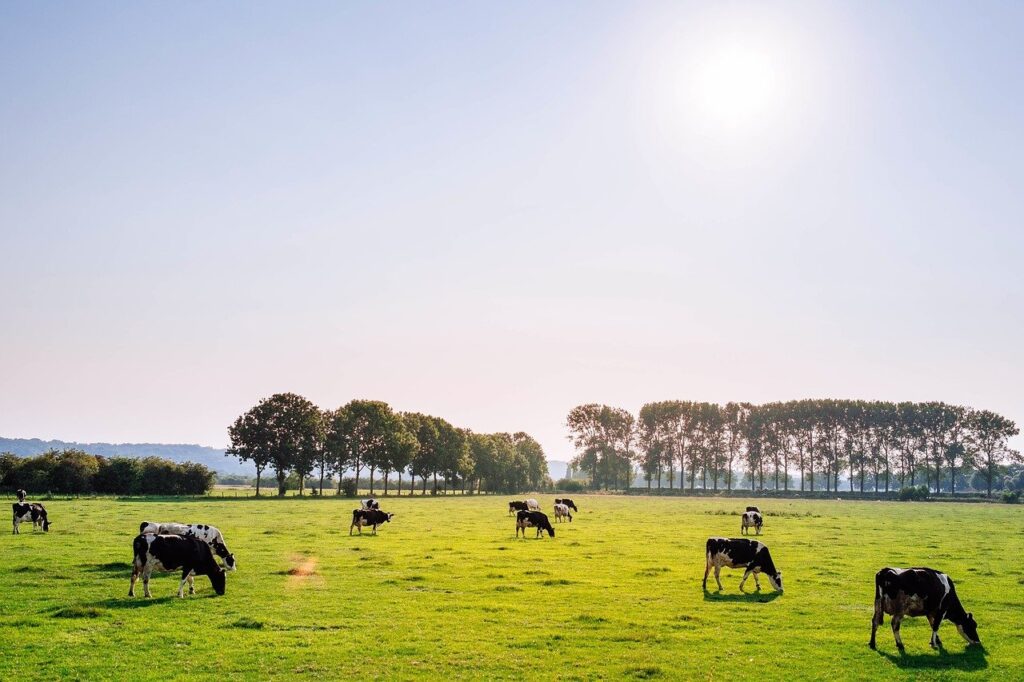In an area like Cahir, farmers and farming families are a large part of our client list that we see daily. Dairy farming injuries are common. Over the years we have noticed that there are injuries that occur frequently among dairy farmers. Some of these injuries may be directly attributed to the milking process, given its repetitive nature. An activity that we repeat twice a day for perhaps more than 300 days a year certainly must be carried out in a safe manner to avoid injury!
The purpose of this short post is to highlight some of the common dairy farming injuries we see and to suggest ways in which you can help yourself, avoiding pain or disability.
Dairy Farmers’ Shoulder Pain
There are few farmers who have not experienced shoulder pain in some form over the years. Typically it presents to physiotherapy as pain, weakness and lack of movement. In milking, this is likely due, at least in part, to overuse of one side when putting on and off the clusters. Switching hands on opposite sides of the parlour will halve the workload on an overused shoulder immediately.
It is something that takes a bit of practice and planning, but using the right hand for cows on the left side of the parlour and then switching to the left hand for cows on the right has been shown to be efficient in terms of time in the parlour and reducing injury. It is often thought that physical work serves as exercise for our joints and muscles. In reality, doing the same physical work for years may not adequately prepare your shoulders for periods of increased demand or times when the load you are carrying is heavier. We usually see farmers with excellent strength in certain ranges of movement, while lacking in others.
Using the overhead bar in the parlour to stretch my increase range of motion while elastic bands attached to the kitchen door handle can be used to strengthen. Both of these exercises can become part of your day – two minutes to stretch while the clusters are on, and two minutes to strengthen while the kettle boils.
Dairy Farmers’ Low Back Pain
It is estimated that at any one time 40% of farmers have some back pain, compared to 20% in similar age groups in other occupations. Lifting is usually cited as the main aggravating factor for this back pain which often leads to work disability that necessitated farmers changing work habits, getting help and needing time off work (Osborne et al, 2012). The types of pain can vary from a tired ache after a long day to the more acute, sharp pain of an injury.
We see lots of farmers with backs that we would describe as strong and stiff. These backs usually manage well, but in times of extra effort – for example calving season with poor sleep and increased workload – may become overwhelmed and develop an injury. People with backs like this we try to encourage to “get ready for spring”. Starting an exercise program during the late autumn and winter will pay dividends in that busy spring period and reduce the chances of dairy farming injuries. Incorporating this into your day could start with rolling down to the floor and arching your back while standing in the parlour or on the farm, or knee rolls and bridges before you go to sleep at night.
Remember the back is designed to bed, so ensuring you have good range of motion is the first step to getting your back ready to move. Looking at a proper lifting technique can reduce the number of injuries caused by lifting on a farm.
Fitness to Farm
We know that farmers now aren’t as physically active as they may have been previously – the quad bike has reduced much of the walking each day. This had led to an increase in obesity in farmers, which is a big risk factor for low back pain. Starting to get more cardiovascular fitness during autumn and winter will have you rearing to go for spring and lower your chances of dairy farming injuries.
It may be walking or running that you can fit into your day – however lots of farmers feel they are on their feet all day so rather something like cycling or swimming, or even one of our pilates classes. An exercise that involves you meeting up with other people not only keeps us motivated but prevents any isolation creeping in, thus helping both our physical and mental health.
Hip and Knee Pain
Long days on your feet, wellingtons in heavy ground and jumping in and out of machinery are the usual culprits for causing hip and knee pain – in addition to old hurling injuries of course! Both of these joints love to move and the hip in particular will benefit from some regular stretching – again easily done with some standing stretches during your day.
Adding some squats to this regime will keep that knee in order also. An exercise bike or regular swimming are good ways to move the hip and knee without taking more weight on it and both can be done inside on the dark evenings so ideal in winter also.
Foot and Ankle Problems in Farming
Any farmer would be concerned about a lame cow, so make sure you give yourself the same care. Foot and ankle pain is common with the main problems coming from the long days in boots. Make sure to invest in good boots and to change them when the support is gone. In addition to helping the foot and ankle, this will help reduce wear and tear on the knee. Simple calf stretches against a wall help the ankle and heel drops off a step are easy to add into your day.
Get fit for Spring
Dairy farming injuries can become less prevalent. Get yourself spring ready by adding 30 minutes of cardiovascular exercise to your day – tough enough that you are a little out of breath, but not completely winded. Try to do this at least five times a week and preferably in a group – why not gather a few local farmers to do something together?
Listen to what your body is telling you, stretch what feels tight, move what is stiff and strengthen what feels tight. Finally, managing your sleep and stress will significantly improve your mental and physical well-being as a whole.
Reference Osborne, Aoife & Finnegan, G & Blake, Catherine & Meredith, David & McNamara, John & Phelan, J & Cunningham, Caitriona. (2012). An evaluation of low back pain among farmers in Ireland. Occupational medicine (Oxford, England). 63. 10.1093/occmed/kqs173.




